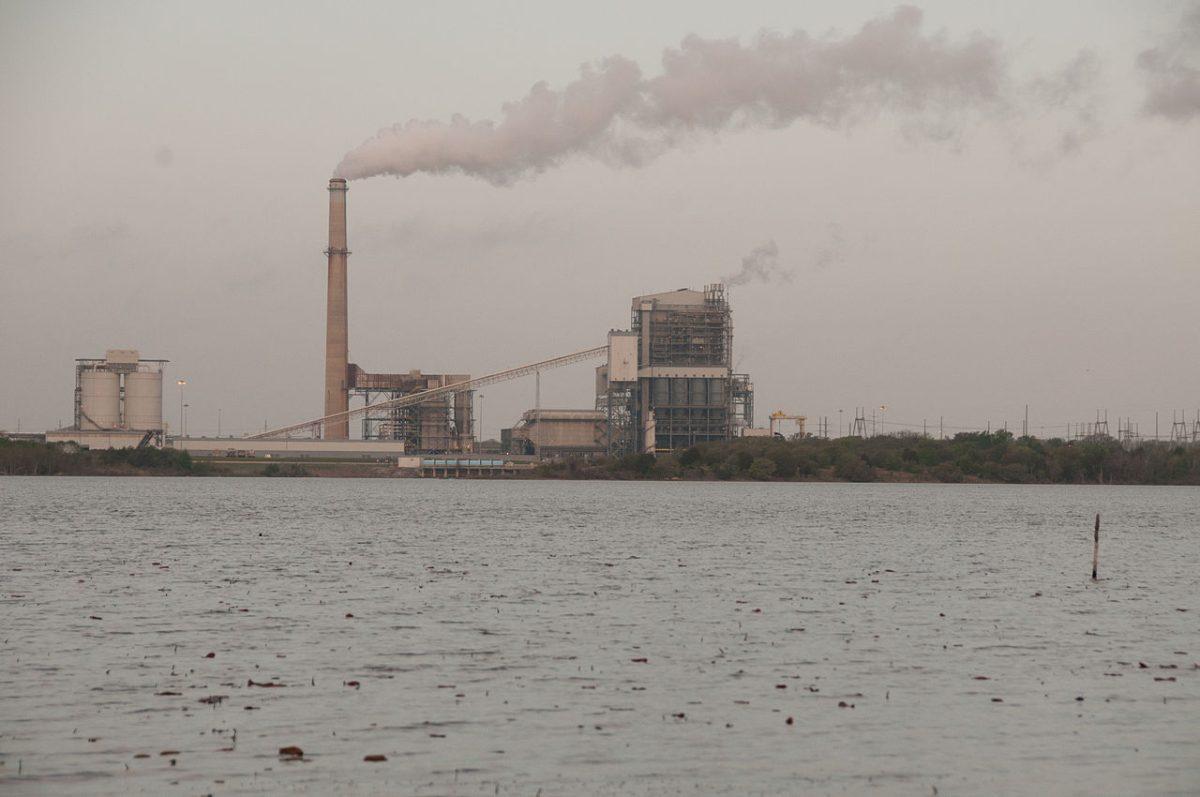The Gibbons Creek Coal Power Station has the potential to reopen, despite a rocky history of financial difficulties and significant environmental liabilities.
The coal plant, located in Grimes County approximately 20 miles outside Bryan-College Station, ran for 35 years until it was shut down in 2018 due to low profit margins, according to an article on S&P Global. The Texas Municipal Power Agency (TMPA) is currently in purchasing discussions with Frontier Applied Sciences, an Arizona-based energy company, to rejuvenate the “mothballed” plant, according to a June article in Navasota News.
Gary Miller, general manager of Bryan Texas Utilities (BTU), said in a recent board meeting that the purchaser could potentially reopen the otherwise indefinitely closed plant.
“[The board will do] what is best for our customer base,” Miller said. “[We’ll consider] how any potential sale affects what our rates to our customers are, and take into account the environmental and health impacts of the community.”
A 2019 article published in The Eagle exposed the coal plant for leaking unsafe levels of contaminants from the plant’s three coal ash impoundments, or ash ponds, into the groundwater surrounding Gibbons Creek Reservoir. This reservoir is a popular fishing and swimming spot for Brazos County residents, and biology sophomore Keerthana Rameshbabu said the unsafe pollutant levels there will have serious health effects on nearby communities.
Rameshbabu, who is also a member of A&M’s chapter of Young Democractic Socialists of America (YDSA), said she believes the plant’s reopening is a racial justice issue as well as an environmental issue.
“It’s no coincidence that this plant was built near [Bryan] with a large minority population,” Rameshbabu said. “They knew the communities there would be directly affected [by the pollution], and that, because a lot of [community members] are lower income, they won’t really be able to fight it.”
Miranda Peterson, a Ph.D. student in the Department of Ecology and Conservation Biology whose research interests include environmental sciences and ecological systems, said it is shocking that TMPA is looking to sell the plant rather than decommission it altogether when it has so many environmental liabilities. However, Peterson said she suspects the TMPA can’t pay for the environmental clean-up costs that accompany decommissioning a coal plant.
Peterson said when looking into environmental remediation requirements for coal plant decommissions, she discovered a report by Resources for the Future, a non profit organization that researches environmental policies and decision-making. The report highlights that when an energy plant is sold “as-is” — as Gibbons Creek is set to be — any existing environmental liabilities will be passed to the purchaser. Peterson said it is historically common for energy plant managers to be unaware of ethical decommissioning processes and then choose to sell the plants “as-is” once profits fail.
“They don’t know the first thing about environmental liabilities or how to clean up properly,” Peterson said. “So they start to panic and usually want the selection to be ‘sell as-is’ as an option. TMPA won’t have to clean up — it’s going to be the purchasers.”
In March, Frontier Applied Sciences came to Austin and created TEERP Power Station, LLC, which has been the name securing approvals for Gibbons Creek’s purchasing, according to an article by the Sierra Club. Peterson said this is a classic example of vulture capitalism, which is when investors purchase failing companies to strip all of the value and then file for bankruptcy.
In addition, Peterson said information about the purchase has been kept a secret from the public, and little is known about the small Arizona company.
“One of the stipulations on the whole agreement is that it needs to remain secret.” Peterson said. “They don’t want people knowing who this company is.”
Peterson said she found several examples of vulture capitalism across the U.S. that sound eerily similar to the case of the Gibbons Creek Coal Plant, such as in Appalachia, Wyoming. Typically, Peterson said investors will create an offset company, like Frontier Applied Science’s TEERP, to purchase a dying coal plant or mine. The CEOs then collect all profits for themselves before filing for bankruptcy. Once they file, the investors are able to walk out on any of the environmental liabilities. In many of those cases, Peterson said the city’s taxpayers had to absorb the costs of the environmental clean-up.
“This is definitely not in our [community members’] interests,” Peterson said. “It’s not even in the city’s interest.”
Rameshbabu said YDSA has started a petition to prevent the reopening of Gibbons Creek Coal Power Station, which has already garnered over 1,200 signatures. She said they also have plans to protest if the plant ultimately does reopen.
General Manager of TMPA Bob Kahn told The Battalion that the negotiations are still ongoing, though BTU Public Relations Representative Kenneth Duprey said there have been no major updates on the negotiations since May. Frontier Applied Sciences could not be reached for comment.
Editor’s Note: Keerthana Rameshbabu is a former opinion writer for The Battalion. This article has been edited for clarity.
Gibbons Creek Coal Power Station could reopen despite environmental liabilities
July 1, 2020
Photo by Creative Commons
The Gibbons Creek Reservoir and Power Plant is located about 20 miles outside of Bryan-College Station.
0
Donate to The Battalion
$2065
$5000
Contributed
Our Goal
Your donation will support the student journalists of Texas A&M University - College Station. Your contribution will allow us to purchase equipment and cover our annual website hosting costs, in addition to paying freelance staffers for their work, travel costs for coverage and more!
More to Discover










